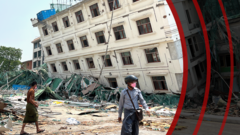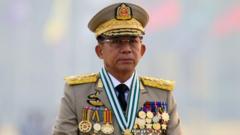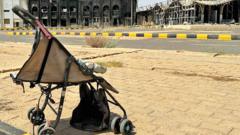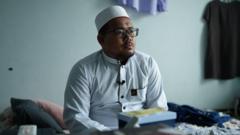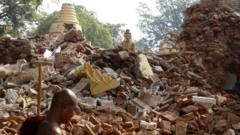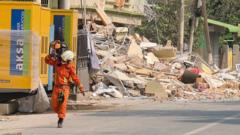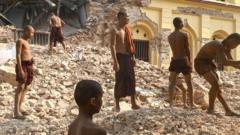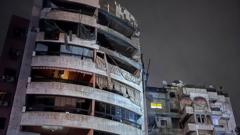Despite a devastating earthquake that left nearly 2,900 confirmed dead, Myanmar's military authorities are blocking crucial humanitarian aid to resistance-held regions. Aid groups fear that the junta’s tactics to control the distribution of support threaten the survival of many victims, while international appeals for relief remain overshadowed by ongoing military actions.
Myanmar's Military: Using Disaster Relief as a Tool of Control
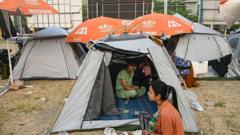
Myanmar's Military: Using Disaster Relief as a Tool of Control
Following a catastrophic earthquake, Myanmar's military junta obstructs humanitarian aid, raising concerns over their continued use of relief efforts as a tactic for political power over affected areas.
In the aftermath of a catastrophic 7.7 magnitude earthquake in Myanmar that resulted in over 2,886 fatalities, a disturbing pattern has emerged: the military junta is weaponizing humanitarian aid. While junta chief Min Aung Hlaing publicly urged international assistance in a bid for legitimacy, reports from local aid groups highlight that rescue workers face significant obstacles imposed by military authorities.
Humanitarian efforts, crucial in the immediate 72 hours post-earthquake when chances of survival for trapped individuals are highest, were severely hampered by military checkpoints, extensive bureaucracy, and curfews. John Quinley from Fortify Rights indicated that the military's claim of safety concerns lacked credibility, given the urgency for help in hard-hit regions like Sagaing and Mandalay.
Adding to the crisis, an aid convoy of the Chinese Red Cross was violently intercepted by military forces, further illustrating the risks faced by those trying to deliver relief supplies. Quinley pointed out that the junta has consistently favored aid distribution in areas they control while restricting it in regions aligned with resistance groups.
The military regime’s strategy appears punitive, aimed at weakening local populations opposed to their rule by depriving them of much-needed support. This tactic of obstructing aid has been witnessed during prior disasters, including Cyclone Mocha and Typhoon Yagi, where assistance was deliberately withheld from resistance strongholds.
As local communities struggle with food and water shortages, the need for international intervention is increasingly critical, with thousands still in desperate need of aid. Human rights organizations are raising alarms, emphasizing that channeling assistance through the junta risks further entrenching their power.
Although some organizations are seeking alternative methods to provide aid by circumventing military oversight, the challenges remain immense, leading to potentially deadly delays. Yet, there is cautious optimism among some aid workers that the scale of the disaster may pressure the regime into allowing better access for humanitarian efforts.
After initial military airstrikes on affected regions, the junta eventually agreed to a temporary ceasefire to facilitate aid, although skepticism remains regarding their commitment to this promise. Experts warn that without stringent monitoring, there is a serious risk that the military could manipulate aid for their own ends, rather than allowing it to reach those who need it most.
In this complex humanitarian landscape, experts emphasize the importance of ensuring that aid is delivered to the most affected communities, regardless of the military’s attempts to leverage it as a weapon.

